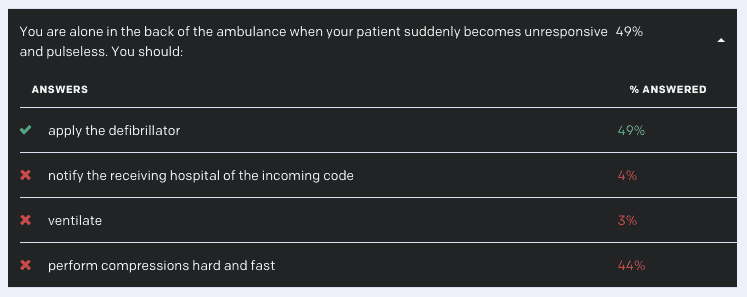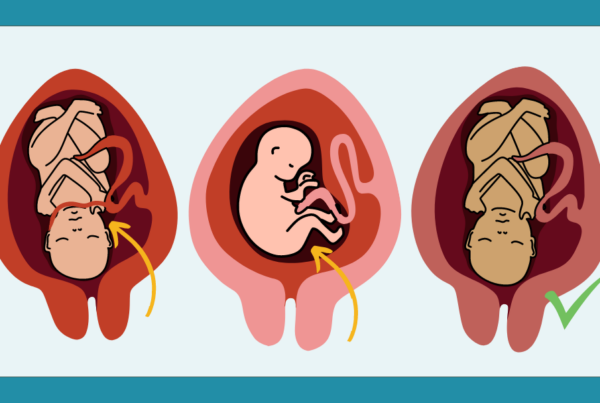The results are in: We don’t know as much as we think we do.
With over 18,000 people (as of the writing of this article) taking the Cardiology quiz there were some very interesting findings. Frequently seen in social media postings around this quiz was the comment that it was “too easy.” The results don’t seem to bear that out. The average score was 71%. Basically a C-.
Starting on a positive note:
- Participants responded well to the anatomy question. 80% were able to correctly identify the wall between the right and left ventricles.
- 81% of the respondents were able to identify atrial fibrillation from the patient’s history.
- Just over half of the participants (54%) got the oxygen question right by choosing not to administer oxygen (see below). How is this good news? The good news is that only 10% of the respondents chose to apply a NRB mask. 31% chose 2 lpm by cannula. I think we are getting better understanding the appropriate role of oxygen in cardiac emergencies.
But that is the end of the positive findings. There were more than a few issues.
- Only 53% of the people who started the quiz finished it. I’m sure that 100 or 200 users may have had a call in the middle of the quiz. As for the other 9,000 I’m guessing they either have attention span issues or they got into the quiz and didn’t know some of the answers so they bailed.
- We still seem to have trouble with basic pathophysiology. Only 58% of people were able to recognize signs and symptoms of right heart failure.
- The worst scoring question had to do with defibrillation. (see below) The question posed a witnessed arrest in the ambulance with a lone EMT. Only 49% defibrillated immediately. I believe the wrong choices were for two reasons: those who wanted to compress first and those whose brain fried because the choice they wanted (pull the ambulance over) wasn’t there. Like in life (and the NREMT), when the correct answer isn’t there you must make the best choice possible.
This isn’t a scientific study. It is a large sampling with results that may indicate trends. I think the most important take home message is that we should always be learning—and that we may not know as much as we think we do.
Here are a few resources that will help you learn more:
Can Oxygen Really Hurt our Patients? by Mike McEvoy
Assessing the Heart by Kelly Grayson and Gene Gandy




